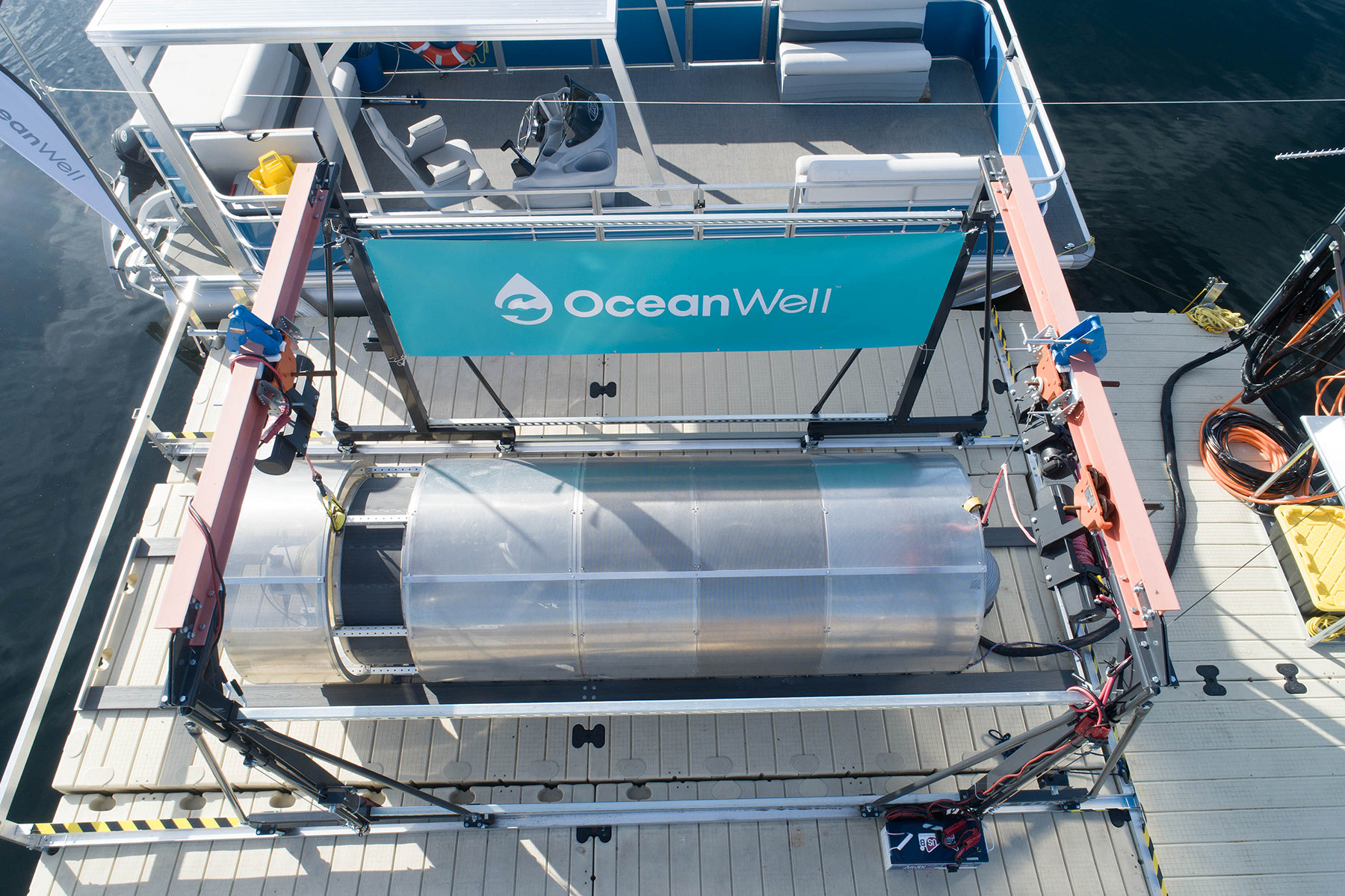
By Kayt Sukel
In The Rime of the Ancient Mariner, 18th-century English poet Samuel Taylor Coleridge wrote the striking line, “Water, water, everywhere, nor any drop to drink.” For residents of California, the line may have deeper poignancy. While more than 800 mi of the state are bordered by the Pacific Ocean, it remains an area plagued by drought and water issues. Most potable water in the southern part of the state is pumped there, sometimes from hundreds of miles away, and those supplies are increasingly threatened by climate change.
With additional concerns about the associated energy costs of moving water from place to place, many infrastructure experts have suggested that ocean desalination could be a viable solution to California’s ongoing water crisis.
Currently, there are a handful of desalination projects in California. The most well-known is the Claude “Bud” Lewis Carlsbad Desalination Plant in Carlsbad, a land-based system that supplies the surrounding area with approximately 10% of its drinking water. Yet David Pedersen, general manager of the Las Virgenes Municipal Water District and administering agent for the Las Virgenes-Triunfo Joint Powers Authority, said that despite Carlsbad’s success, there is a desire to innovate to make desalination more sustainable and cost-effective.
There is “a tremendous appetite for new innovation and the use of new technology to solve our water problems and do it in a way where we don’t have to compromise some of our ethics around protecting the environment,” Pedersen stated.
The Las Virgenes Municipal Water District, which serves cities including Calabasas, Hidden Hills, and Westlake Village near Los Angeles, first became interested in a desalination solution after the drought of 2020-2022. The area has no groundwater and is completely dependent on imported water. When the water district held an online town hall meeting after a 73% reduction in their normal water supply, residents were clamoring for change, according to Pedersen.
“People repeatedly asked us why we weren’t looking at seawater desalination so that we can have a local water supply that is not dependent on the weather or hydrology of California,” he said. But he had concerns about how to accomplish such a task.
Existing desalination approaches can discharge large amounts of brine back into the water, which increases both the temperature and salinity of the surrounding area. This process can negatively affect the balance of the underwater ecosystem. Desalination filter membranes can also inadvertently trap minuscule ocean life, robbing the water of vital microorganisms that help the entire ocean environment thrive. Yet, Pedersen said, with customers pushing for a new approach, he wanted to explore innovative desalination solutions that could address those issues.
“I want to provide high-quality water that is produced with a healthy environment and ecosystem in mind,” said Pedersen. “And I want to do it without creating a bunch of greenhouse gases that will cause and fuel climate change ... or where we need to use a ton of energy to pump the water, which, in turn, contributes to a vicious cycle where the solution is actually aggravating the problem.”
A new approach
To address these concerns, OceanWell, a California-based company, has focused on developing a more sustainable approach to ocean desalination by leveraging deep-sea pod devices. Robert Bergstrom, CEO of the organization, said he has been in the desalination space for a long time and has worked for decades to create a solution that minimizes environmental impact in the sea and on land.
“California has such an obvious water problem — and such an obvious solution with the ocean right there,” he said. “But things like strong brine streams and the inability to filter out small marine organisms” have long been barriers. “We are developing a totally different system that leaves marine life in the ocean with as little handling as possible and also decreases the strength of the brine created.”

The OceanWell system employs unique cylindrical pods, which are placed at depths of about 400 m below sea level, to capture water. The natural hydrostatic pressure at that depth drives a reverse osmosis process, removing salts, bacteria, viruses, pesticides, and plastics to produce fresh drinking water.
“You have seawater that comes into the pod and goes through a series of increasingly finer screens. That (process) allows us to reduce the amount of debris in the water,” as well as the larger salt molecules, without disturbing the ocean life, noted Bergstrom.
The pods are also equipped with low-pressure pumps that move the desalinated water to infrastructure on shore. Bergstrom said this approach reduces the energy requirements seen in existing land-based systems to the tune of 40%.
Each pod has the power to generate an estimated 1 million gal. of freshwater per day, and the system’s modular approach means water districts like Las Virgenes could potentially build a water farm with as many pods as necessary to supply the area with its drinking water.
“With traditional desalination, you need to build a plant to a certain capacity, and everything is sized to that capacity,” said Bergstrom. “In ours, you build the basic framework and then you can add more (pods) as you go.”
Testing innovation
OceanWell has recently raised $11 million in capital, including from infrastructure giant Kubota, to pilot test its system. There is already a demonstration installation in the Las Virgenes reservoir, and the water district, as well as other agencies, have signed on to develop the proper water infrastructure to support it. Pedersen said he and other stakeholders have formed a working group and are examining how they might use existing infrastructure to support this type of desalination.
“Our challenge is most of our water infrastructure was not designed to bring water from the coast inland, but the opposite,” Pedersen said. “We’re currently looking at our existing pipe infrastructure, trying to figure out how we could maximize it and be smart and strategic ... to get the physical water to the largest group of participants.”
The hope is to have a working installation by 2030. Pedersen explained that the working group is also in the process of determining the optimal place to put their under-ocean water farm and how to make the piping infrastructure as cost-effective as possible. What’s more, they are committed to being transparent with the data they collect as they do this pivotal research to assure all stakeholders that they are developing a system that makes environmental and economic sense.
Pedersen said that from an engineering viewpoint, once they figure out how to “put all the pieces together,” they will be able to devise a solution that is “tempered with environmental protection, social justice, economics, and political will.” It will not be a simple task, he said, but he is looking forward to refining the system at each step. “That’s part of the fun of being an engineer: We will have a new problem that we will solve.”
Bergstrom, for his part, sees a future where areas such as those served by the Las Virgenes water district no longer have to get their water pumped in from the California State Water Project or the Colorado River.
OceanWell will be a “new, supplemental source of water” for California, according to Bergstrom. In the end, this new technology will take pressure off the current system, “leaving more water for Colorado and other states that don’t have an ocean.”
Kayt Sukel is a science and technology writer based outside Houston.
This article first appeared in the September/October 2025 issue of Civil Engineering as “Ocean Innovation.”



